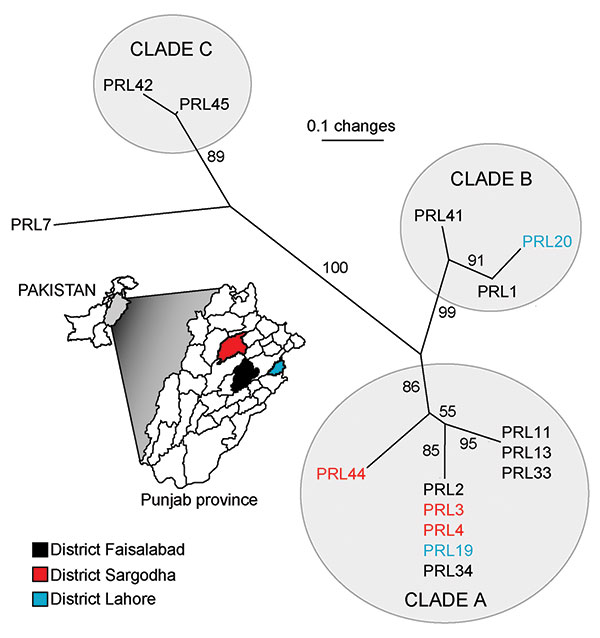Volume 15, Number 12—December 2009
Dispatch
Molecular Epidemiology of Glanders, Pakistan
Figure 2

Figure 2. Unrooted neighbor-joining tree showing phylogenetic relationships among 15 samples of Burkholderia mallei from the Punjab Province, Pakistan. Statistical support for each branch derived from 1,000 bootstrap iterations are shown. Sample names are color-coded to match their district of origin in reference to the inset map of the Punjab Province. Approximate linear distances between districts are Faisalabad to Lahore ≈120 km, Faisalabad to Sargodha ≈84 km, Lahore to Sargodha ≈168 km.
Page created: December 09, 2010
Page updated: December 09, 2010
Page reviewed: December 09, 2010
The conclusions, findings, and opinions expressed by authors contributing to this journal do not necessarily reflect the official position of the U.S. Department of Health and Human Services, the Public Health Service, the Centers for Disease Control and Prevention, or the authors' affiliated institutions. Use of trade names is for identification only and does not imply endorsement by any of the groups named above.